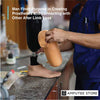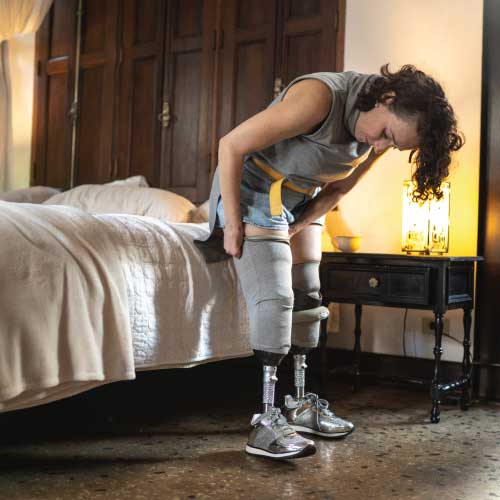The Cerebellum of the Brain May Aid in Guiding Prosthetic Limbs
For individuals with motor cortex damage exhibited through stroke or diseases like multiple sclerosis or Parkinson’s, manipulating prosthetic devices can be a significant challenge. However, recent findings in neurology offer a glimmer of hope. These findings suggest that tapping the cerebellum’s powers could potentially improve the quality of life for certain people.

Known as the “little brain,” the cerebellum is found beneath the brain. Prosthetic researchers have overlooked it in favor of the cerebral cortex, the outermost layer of tissue covering the brain.
However, as demonstrated in lab studies with rats, the cerebellum can play a key role in controlling the movement of prostheses using brain waves.
In a news release, Tanuj Gulati, one of the study’s authors and an assistant professor of biomedical sciences and neurology at the Cedars-Sinai Center for Neural Science and Medicine in Los Angeles, shared the groundbreaking nature of their research.
He and his colleagues made history by documenting the cerebellum’s role in operating neuroprosthetics. Their findings underscore the importance of stimulating this area to effectively use prosthetic devices.
Aamir Abbasi, a postdoctoral scientist at Gulati’s lab, said the team discovered that the neurons in the cerebellum work together with the motor cortex and are essential for controlling tasks using neuroprosthetics.
In an experiment, the researchers taught rats to control a robotic water pipe using electrodes in their brains. The researchers found that when they switched off specific brain cells in the outer layer of the cerebellum, the rats struggled to move the pipe and get water. When they turned off different cells deep inside the cerebellum, the rats had difficulty accurately controlling the pipe.
This experiment helped researchers learn how the cerebellum helps with movement.
Dr. Nancy Sicotte, the chair of neurology at Cedars-Sinai, said that these findings could lead to the possibility of using neuroprosthetics to help people who have suffered damage to the part of the brain responsible for controlling movement. This could benefit patients with brain injuries, stroke, Parkinson's, or multiple sclerosis.
In the future, implants in the cerebellum could even help these patients operate external devices.
Dr. David Underhill, the chair of biomedical sciences at Cedars-Sinai, suggests that existing problems with brain-controlled devices could be fixed by involving the cerebellum alongside the motor cortex. This could help patients quickly improve their use of neuroprosthetic devices and enhance their ability to control them accurately.











































































